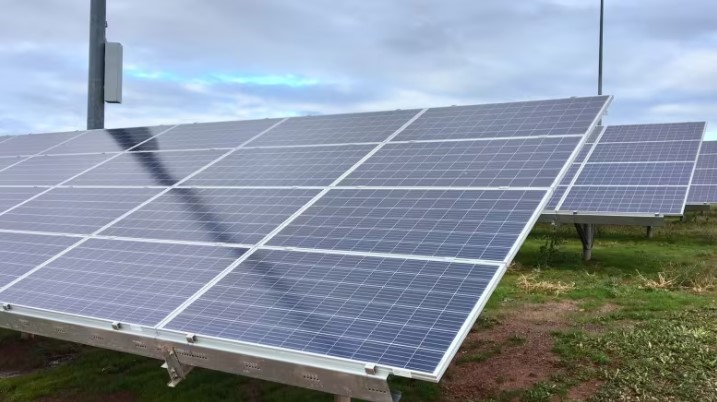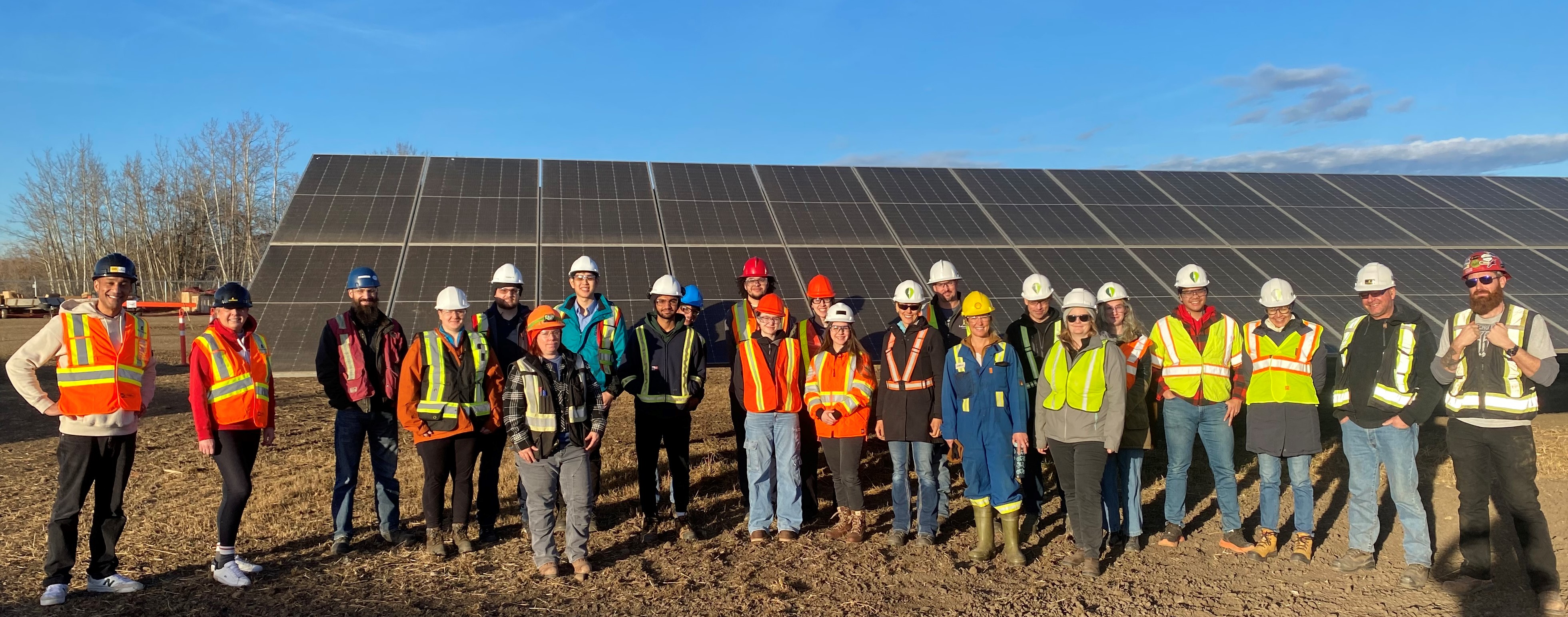Touring Scotford Solar Farm, Canada's largest "behind the meter" solar project.
TAGS: nature projects; solar; renewable energy design
Why I Did This
I'm a member of the UofA student club Renewable Energy Design (RED), and we were invited by the Women In Renewable Energey (WIRE) organization to tour the Scotford Solar Farm. It was a great opportunity to see a large scale solar farm, especially one that is considered the largest "behind the meter" project in Canada; "Behind the meter" means that all the generated power goes directly to the Shell Scotford industrial site (no grid supplying). Aside from getting the opportunity to see a giant ~58MW solar farm (which I have not done before), it was also an opportunity to see what challenges and solutions were present for such a unique project.

An example solar panel that looks similar to the panels used at the farm. I grabbed it from the CBC article in the references.
Design Walkthrough
We weren't allowed to take personal photos so I only have the group one (which includes other
tour attendees and one of the panels in the background). I won't go into too much detail
about the project itself, as the references (see bottom of this article) are better
explainers of it.
I will note some interesting things I learned from the tour:
- Many of the 'near panel' wires were actually the typical size of a small/house scale solar
system (I think ~11AWG); it isn't until they branch together in junction boxes that the
gauges get larger.
- The power generated is converted to AC before being sent to the industrial site; there
were about 10 inverters that could convert 1500VDC to 25000VAC.
- The panels were mounted on a fixed tilt system (no tracking); they were originally planned
to have tilt features (which I heard from other research resources would probably increase
production about 20%; this site seems to agree:
https://www.polarracking.com/blog/fixed-tilt-vs-single-axis-solar-racking-mounting/ ); they
scrapped the tilt feature concept because it would require 3x the amount of land to hold the
mechanical equipment used for tilting.
- The panels are transparent to allow for additional light capture via reflection; this
might
be seen as more beneficial in the winter time when snow is present, which can hopefully
supplement the panels during that lower sun season.
- The system has an AI that can detect when the panels are filled with dust or snow,
indicating of such need for maintenance.
- The system has numerous solar radiation detectors (they look like clear half-spheres) that
read the intensity of the sun pointing both down to Earth and up from the ground (for the reflection intensity).

Our fellow attendees (some are: project employees, RED members, another UofA electrical engineering student club, personal contractors, and WIRE members); I'm fifth from the left side. Also, some actual panels used on the farm.
References
WIRE tour info: https://solaralberta.ca/event/wire-field-trip-at-scotford-solar-farm-behind-the-meter-industrial-energy/
Solar farm website: https://scotfordsolar.ca/
Alberta projects reference: https://majorprojects.alberta.ca/details/Scotford-Refinery-Solar-Farm/6523
WIRE tour article: https://womeninrenewableenergy.ca/wire-energy-news/wire-alberta-field-trip-to-scotford-solar-farm
CBC article about project: https://www.cbc.ca/news/canada/edmonton/shell-solar-farm-edmonton-alberta-1.6242314